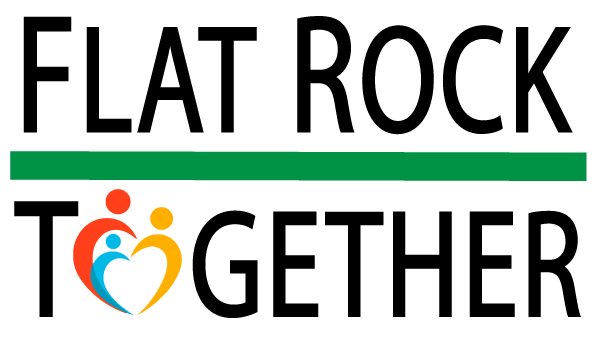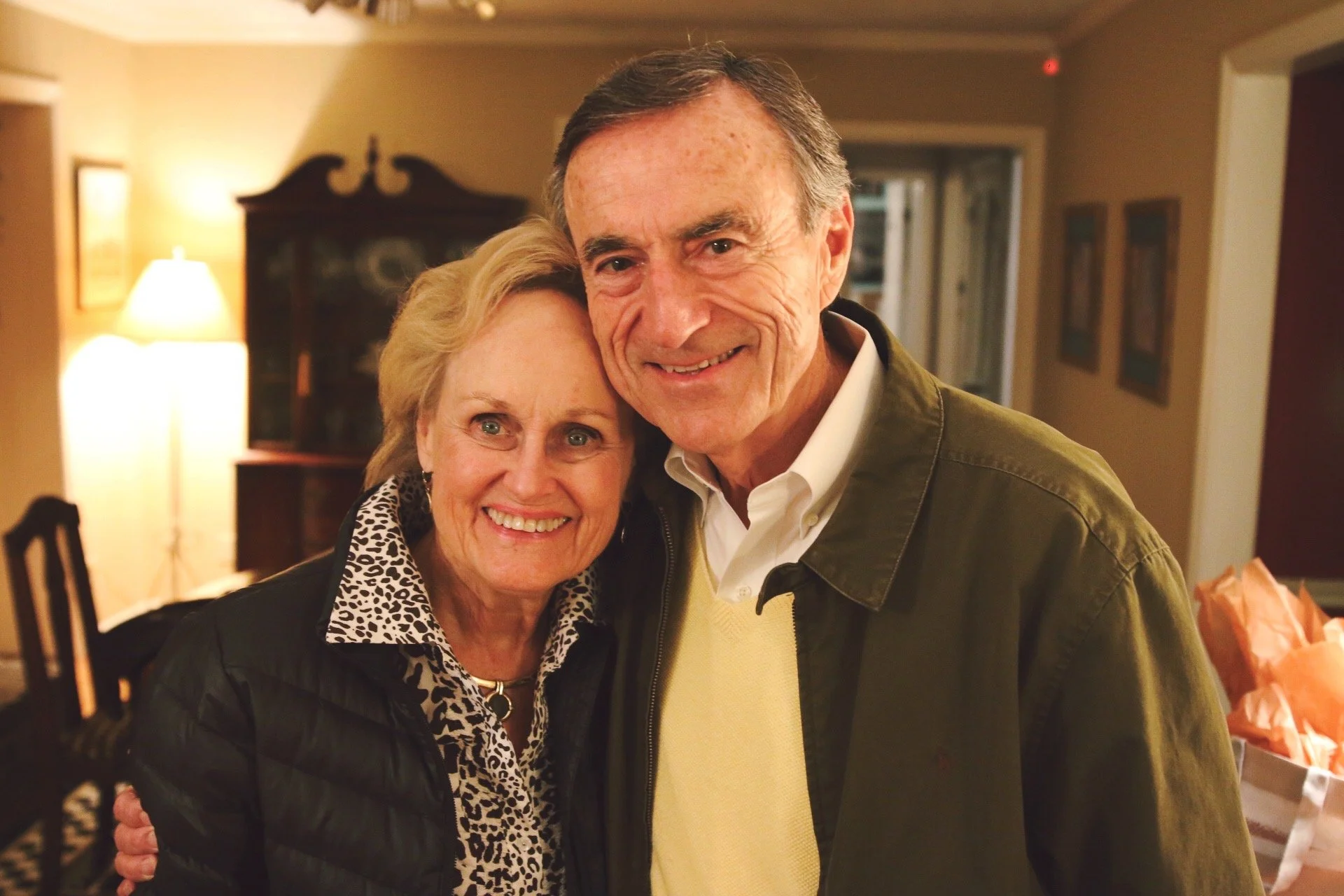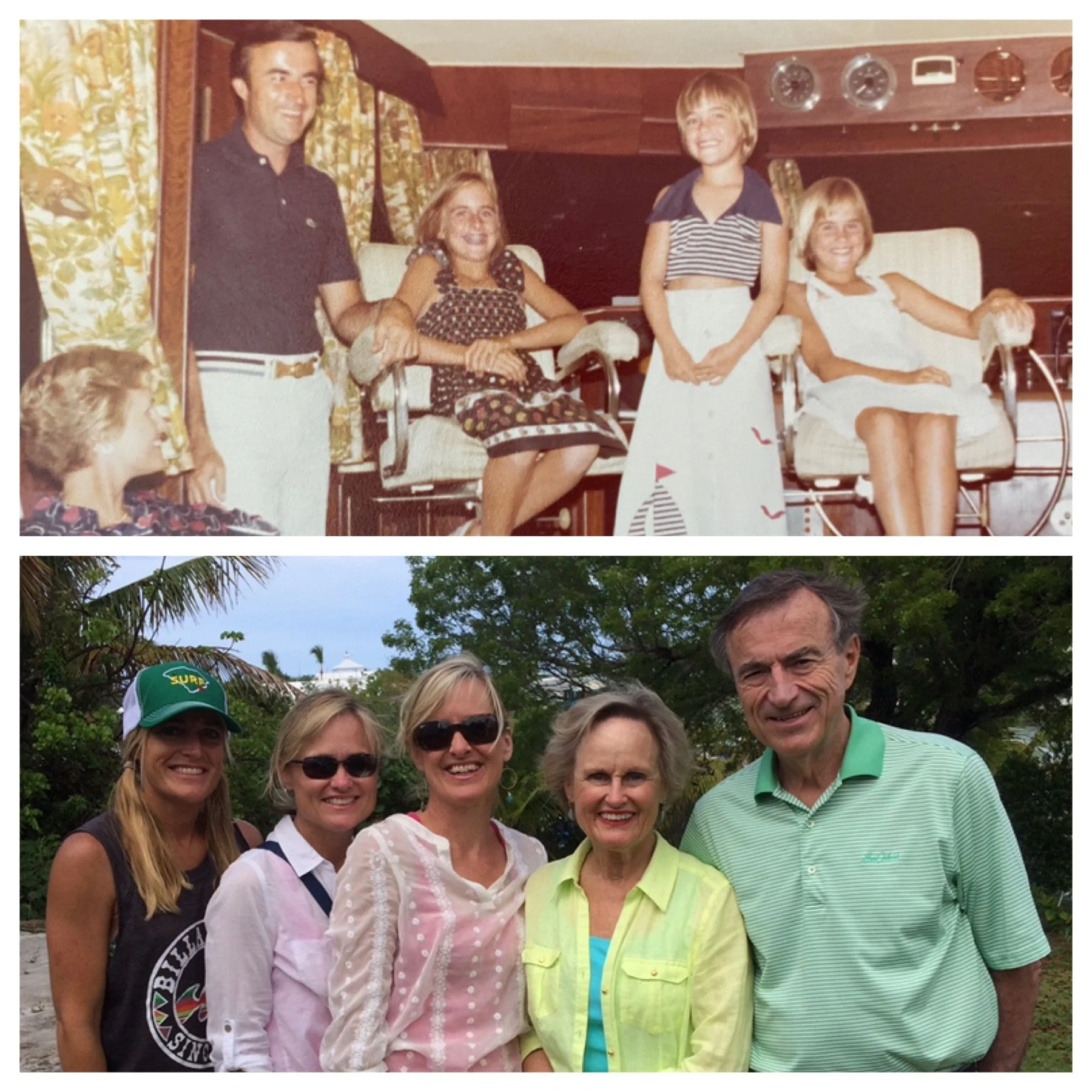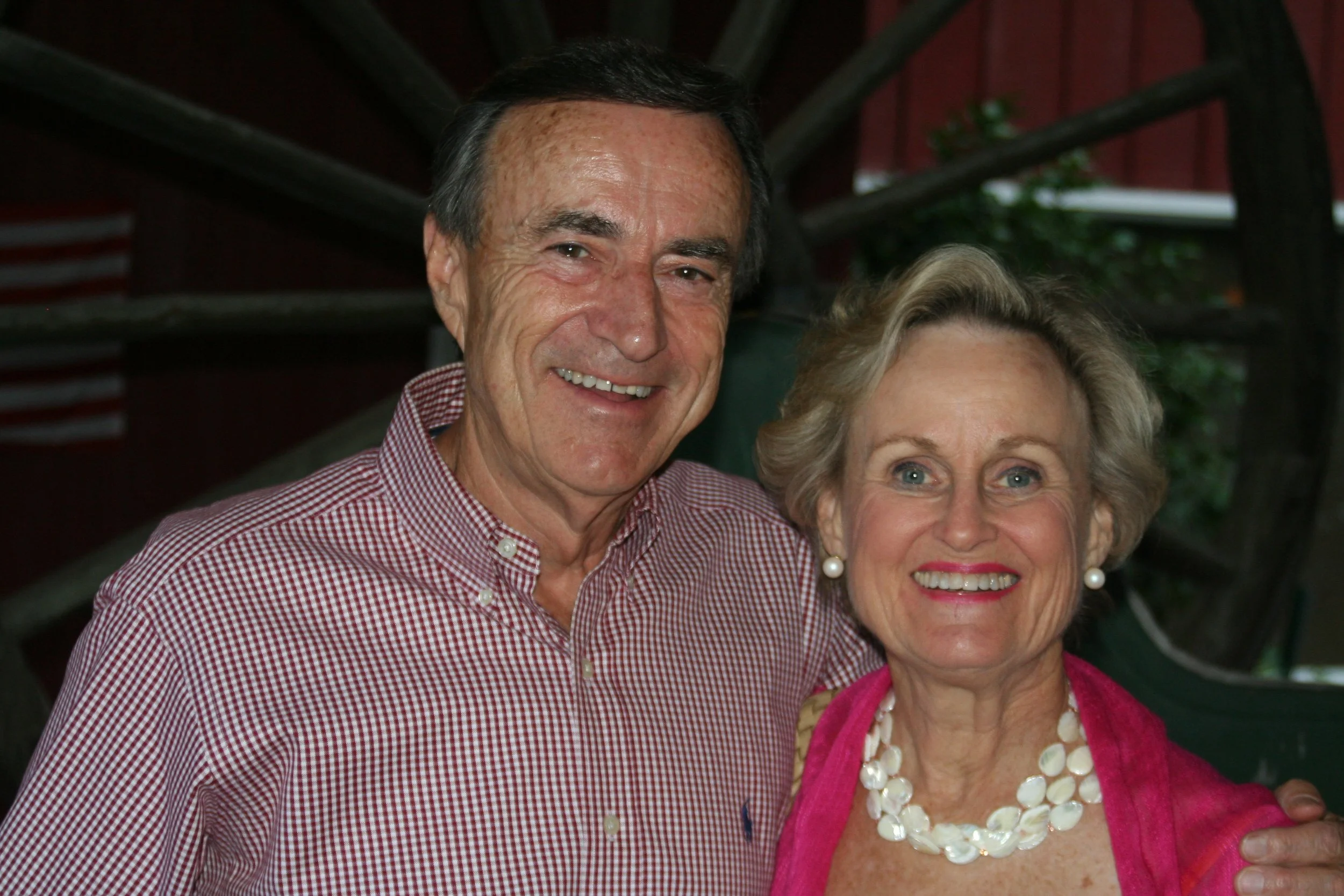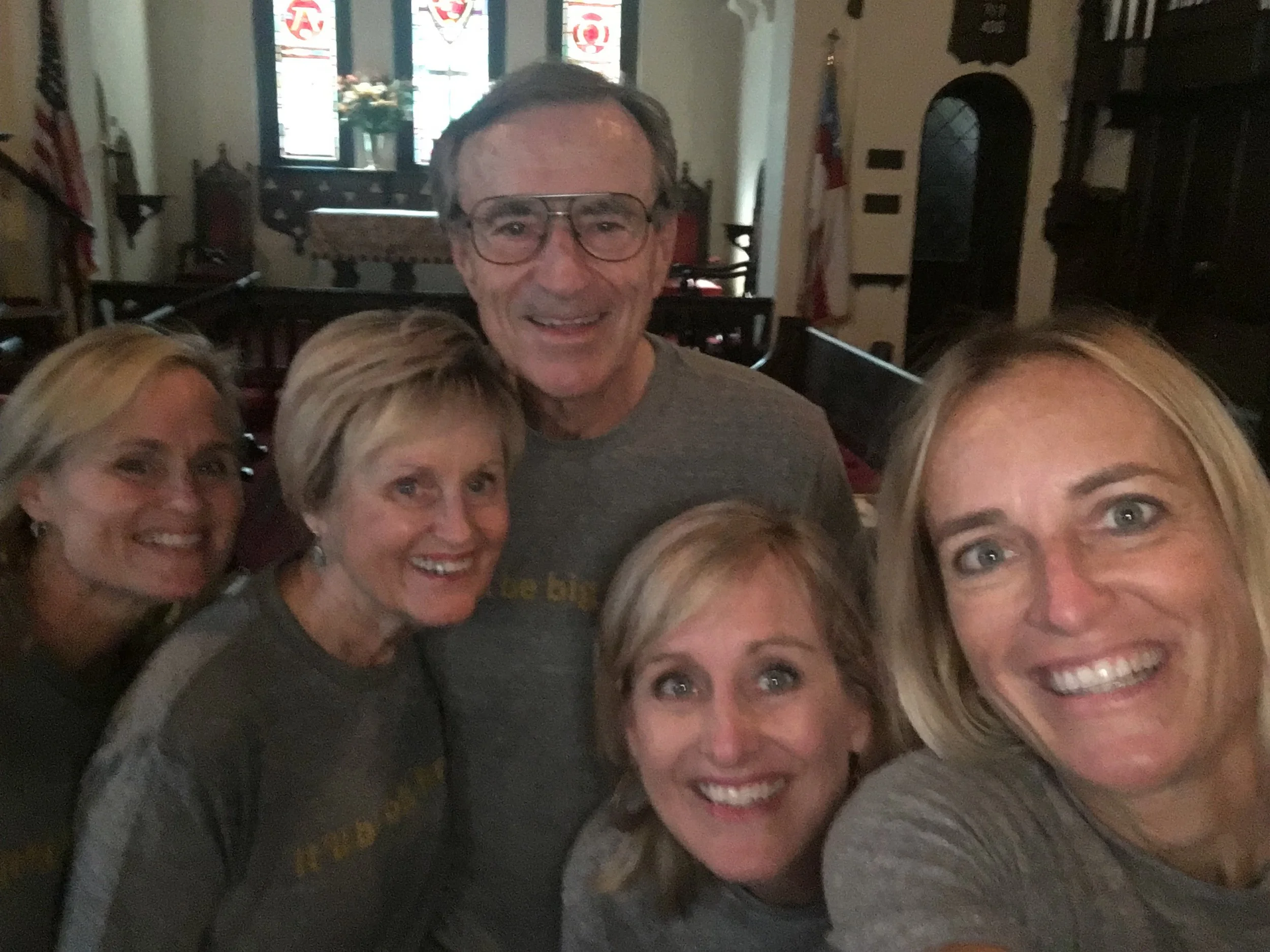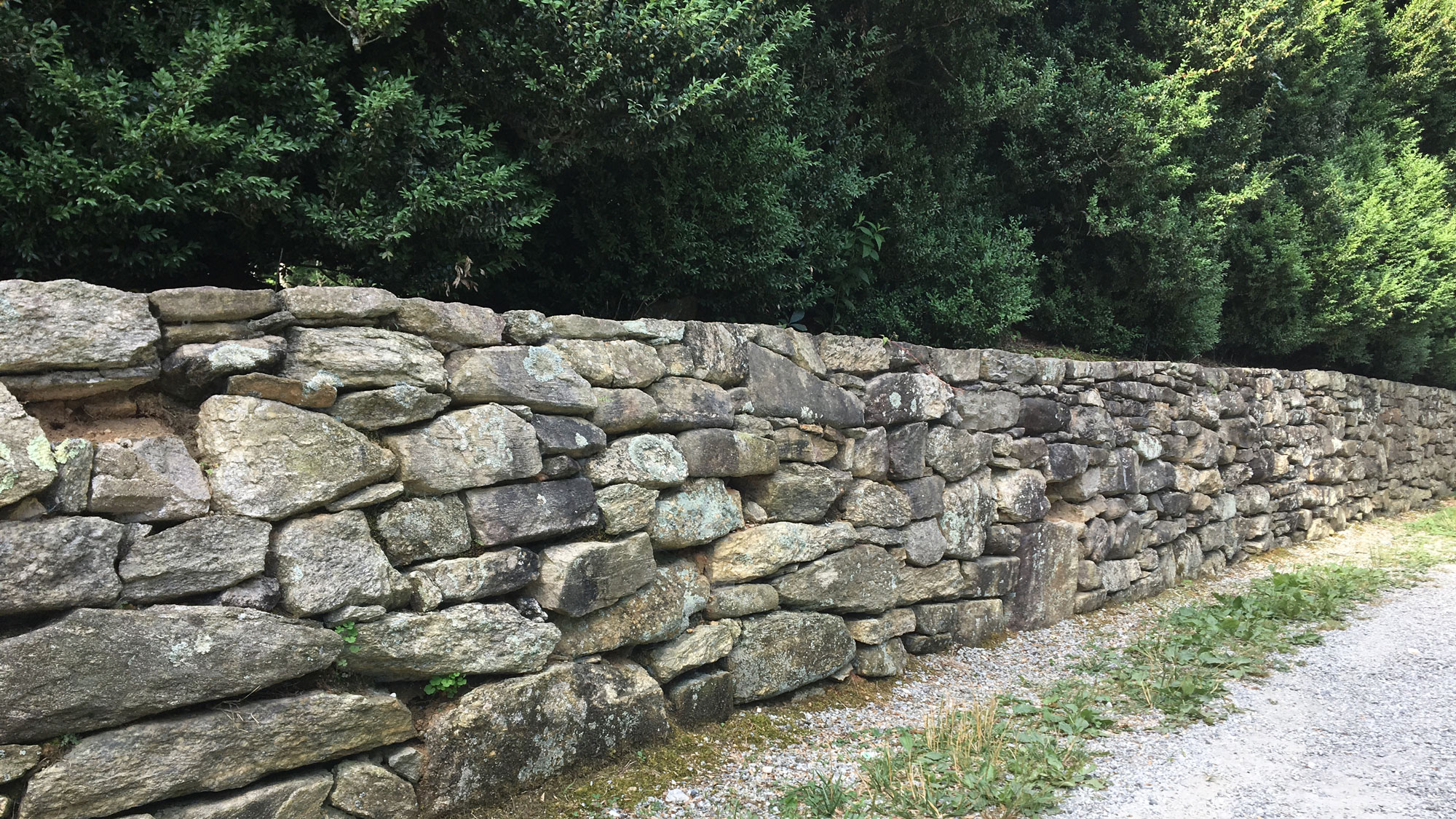Flight, Faith, and the Courage to Soar - Part II
/From Part 1 …
The Gulfstream IV jet banked low over the city of Kaunas, Lithuania, its sleek white body flashing in the summer light. From his window seat, Bill looked down at the airfield below, where a sea of nearly 500,000 people pressed against barricades and waved flags in celebration.
It was July 1992, and the world beneath him had only recently been reborn. Lithuania was free again, shaking off the weight of Soviet rule, and Bill Walker - successful businessman, accomplished pilot, and man who saw possibilities where others only saw obstacles - was about to touch down at the center of Lithuania’s national pride.
Flat Rock resident Bill Walker had made the flight happen. He arranged the plane, the crew, the logistics, even the commemorative stamps for the mailbags in the cargo hold. What had begun with an unexpected phone call from a stranger had grown into a mission to complete a legendary but tragically unfinished journey. A journey first attempted nearly sixty years earlier by two Lithuanian aviators who had vanished before reaching home. (Read Part 1 Here)
The Call
By the early 1990s, Bill Walker was trying to keep his general aviation business afloat. A general liability insurance crisis during the mid-1980s led to soaring premiums, and the aviation industry was flooded with lawsuits against aircraft manufacturers and sellers. Bill Walker & Associates was on the ropes financially.
The resulting collapse of the market for used airplanes had wiped out most of his equity — he’d spent twenty million dollars on inventory and now those planes had a market value of only half that amount. “I had to figure out how to keep my business going,” said Bill.
Then came the phone call that changed everything. A man had seen an ad for Bill’s company and was asking a very strange question. He wanted to know if the Aerospace Hawker 125 Bill had for sale could fly from New York to Lithuania. Bill listened and, as much as he needed to make the sale, he had to be honest with the caller. “I told him that Hawker will never make it,” he recalled. “It’ll fall in the water halfway over there. It burns too much fuel and doesn’t have that kind of range.”
As the reason for the call became clear, Bill learned that the caller was a young man named Edwin Velonskis, the son of a prominent Lithuanian-American businessman. He and his father were on an unusual quest – on behalf of the President of the newly independent Republic of Lithuania. Edwin explained that they were trying to arrange a flight to deliver mail from Lithuanian-Americans to their families and friends back home. It would be a symbolic flight, completing a similar attempt some 60 years earlier that had ended in tragedy. A flight that, even six decades later, was an integral part of Lithuanian legend and lore.
The History of Lituanica I
Lituanica I Flying over New York City in 1933
Long before Bill Walker ever heard of Lithuania, the dream of a transatlantic flight from America to that small Baltic nation had already claimed two lives and captured a country’s imagination.
In July 1933, two Lithuanian-American pilots, Steponas Darius and Stanislovas Girėnas, set out from Long Island, New York, in a single-engine Bellanca CH-300 christened Lituanica. Their mission was both symbolic and deeply personal - to carry sacks of mail from Lithuanian immigrants in America to their families back home, creating a bridge of letters and love across the Atlantic.
After more than 37 hours in the air and nearly 4,000 miles traveled, the Lituanica crashed in what is now Poland, just 400 miles short of its destination. Both men were killed instantly. But, in an extraordinary act of devotion, rescuers gathered the scattered mail from the wreckage and saw to it that every letter reached its intended recipient. In Lithuania, both Darius and Girėnas became national heroes. Streets, monuments, and public squares across the country bore their names, symbols of courage and sacrifice in a land long denied its freedom.
A second attempt, three decades later in 1963, ended much the same way — another crash, another tragedy, but the mail again was delivered.
By 1992, Lithuania was newly independent after fifty years of Soviet rule, and a new generation was determined to reclaim its history. The country’s first post-Soviet president, Algirdas Brazauskas, took a personal interest in reviving the spirit of the Lituanica flight. To him, the symbolic act of flying mail once more from America to Lithuania wasn’t just about aviation - it was about creating national identity, connection, and pride.
Lithuanian Currency with images of Darius and Girėnas
He turned to an old friend, businessman Simas Velonskis, a Lithuanian émigré who had helped support his presidential campaign. Velonskis embraced the challenge and tasked his 23-year-old son, Edwin, to find a suitable airplane for the flight - one that could safely cross the Atlantic and land in the old capital, Kaunas, the very city Darius and Girėnas had hoped to reach.
That search, improbably, led to a small airport office in Georgia, and to the man who answered Edwin’s call: Bill Walker.
Finding a Plane
When Edwin Velonskis first called, Bill Walker didn’t give the request a second thought. People phoned all the time asking about aircraft they couldn’t afford, didn’t need, or couldn’t fly. But this one was decidedly different - a 23-year-old calling on behalf of the president of a newly reborn nation, asking for help with a transatlantic flight to carry mail across the ocean.
Although Bill didn’t have the plane Edwin needed, he was happy to offer advice regarding aircraft that could handle the 4500 miles from New York to Kaunas. Bill mentioned a Learjet 36 or a Gulfstream IV as good options. “With the right airplane,” he told Edwin, “You could do it.”
Then Edwin asked a second question that shifted everything. “Do you think you could find a plane for us?” Bill hesitated. He’d heard plenty of improbable schemes in his career, but there was something about this one — its mix of idealism and history — that caught his imagination. He explained that it would take a lot of research to find the right plane and suggested a $5,000 deposit to cover his time and effort. “To be honest,” he recalls now, “I never expected to see that $5,000.”
Bill hung up the phone that day, thinking it was just another inquiry that would fade into nothing. But within the hour, Edwin’s father, Simas Velonskis, called back. “Do you really think you could make this flight happen?” he asked. “With the right airplane,” Bill assured him. Then, in yet another improbable twist, the elder Velonskis informed Bill that they would need the plane to make the flight in just three weeks’ time –to coincide with the anniversary of the original Lituanica flight of July 15, 1933
That conversation marked the start of one of the most improbable aviation projects of Bill Walker’s life — a race against time to recreate a flight that history had denied. And though he didn’t yet know it, the project would carry him far beyond the cockpit, into the political and spiritual heart of a nation learning to fly again.
Lituanica III
Once Bill agreed to help, everything began moving at a dizzying pace. He started calling around, looking for someone willing to lend a long-range jet for the mission. He pitched the idea to anyone who might have both the resources and the sense of opportunity. He called Coca-Cola, the large tobacco companies, computer firms, and anyone with a corporate jet and an eye on new opportunities in Eastern Europe. And since he was calling as an agent of the President of Lithuania, companies were willing to listen. Top executives took his calls. Everyone wanted to be part of history. But the timing was too short. Every plane was already committed to board meetings and business travel.
Bill persisted, however, and he eventually found a software company in Florida willing to loan him a pristine Gulfstream IV with no markings, just a clean white fuselage with its tail number. The owner agreed to lend it for expenses only. “It was perfect,” Bill said. “A beautiful airplane with the range to do the job.”
When Bill called Simas Velonskis with the good news, the Lithuanian businessman offered up yet another unexpected twist for Bill’s consideration. He wanted his son, Edwin, to serve as the captain of the flight. Bill hesitated. “Your son doesn’t have a pilot’s license,” he pointed out. “Can you get him one?” Simas asked. “Well,” Bill said, “I can get him a student pilot’s license. And I can teach him the fundamentals.” Then Simas had one more request. He asked Bill on the flight to make sure his son was safe and informed. Bill enthusiastically agreed.
To the world - and history - Edwin Velonskis would be the captain of Lituanica III, wearing the four-striped uniform of Lithuanian Airlines, while Bill, in three stripes, would play the role of first officer. In actuality and for insurance reasons, the Gulfstream’s corporate pilots and flight attendant would quietly fly the plane, but be unseen by the public. History would record Edwin as the pilot of the historic flight.
Bill threw himself into preparations. He ordered decals from a sign company in St. Simon’s Island to transform the plain jet into Lituanica III. Working into the night before the flight, he climbed ladders under the hangar lights, applying the decals himself until the aircraft gleamed in red, green, and yellow - the colors of a free Lithuania. Lituanica III was ready to fly.
In New York, Lithuanian-American communities rallied around the mission. Through radio stations and cultural associations, word spread. They were urged to write letters to friends and relatives back home. Mailbags began arriving in New York. The U.S. Postal Service even authorized a commemorative stamp for the occasion and authorized Bill and Edwin to cancel the mail in flight - marking each envelope as part of a historic journey.
On the afternoon of departure, the crew boarded in their newly tailored uniforms - American Airlines attire restyled with vintage Lithuanian insignia. They loaded the mailbags, checked the weather, and lifted off from Farmingdale, Long Island, bound for Kaunas.
During the long night over the Atlantic, Bill and Edwin quietly stamped letters while the professional crew handled the flying. As dawn broke over Europe, the Gulfstream descended through scattered clouds toward a newly independent nation still trembling with pride and possibility.
Upon arriving in Kaunas, Bill (L) and Edwin (r) presented a replica of the Statue of Liberty to president Algirdas Brazauskas
When the aircraft appeared over Kaunas, it was met by a sight that Bill will never forget. Surrounding the airport below, half a million people crowded the airfield. Flags waved, choirs sang, and banners stretched across the tarmac.
Bill and Edwin stepped out carrying a small replica of the Statue of Liberty - a gift to symbolize freedom shared between two nations. Waiting for them were Lithuania’s President, Prime Minister, and Minister of Transport, along with ambassadors from across Europe. Garlands were placed around their necks, and commemorative books were pressed into their hands.
At first, all eyes were on the young “captain,” Edwin Velonskis. But when Edwin deferred to Bill for every question, it didn’t take long for the Lithuanian officials and assembled dignitaries to realize it was Bill who had all the answers about the flight.
It was an overwhelming moment. Bill Walker, a small-town boy from Georgia, standing before a sea of flags in a nation reborn, bridging history, faith, and flight in a way that no one could have scripted.
A Nation Needing Help
After the ceremony at Kaunas Airport, the celebration gave way to an unvarnished conversation about what independence really meant. Bill was invited to meet privately with Lithuania’s new leaders, men who were jubilant in public but anxious in private. They began to speak candidly about their country’s condition: no banks, no hotels, no oil, no credit cards, and airports with old and inoperable Soviet-era planes. “We’ve got this Republic,” one of them said, “and we don’t know what we’re going to do with it.”
(L_R) Edwin Velonskis, Simas Velonskis, and Bill Walker upon the completion of the flight to Kaunas
Bill listened as they described shortages and shutdowns, each problem echoing the last. He offered straightforward ideas - how to build partnerships, how to attract Western help without losing control. Before long, one of the officials turned to him and asked, “Would you come work with us and help us with all these things?”
When Bill asked whether they could pay him, the answer was deflating. The President of Lithuania earned $625 a month, the typical police officer about $30, and the government had no money. Surprised but not deterred, Bill proposed a solution they could afford. If they would authorize him as their representative, he’d negotiate directly with Western companies - Boeing, British Aerospace, Hilton, the major banks - and those firms would pay him instead. The president agreed at once.
Bill found a secretary who spoke English, dictated the terms of a formal mandate letter, and had it translated into Lithuanian. “She typed it out in both languages,” he recalled. President Brazauskas readily signed it, handed it back to Bill, and said, “You’re on.”
With that, Bill Walker — businessman, pilot, and now unofficial envoy — became a representative of a nation learning to stand on its own.
Rebooting Lithuanian Airlines
Bill greeted with Garlands after the flight of Lituanica III
When Bill began his work with Lithuania, the country technically had a national airline, but it was crippled by the remnants of the Soviet system. The fleet consisted of Russian-made jets — solid designs, but years of neglect and corruption had left them useless. Mechanics couldn’t get parts without paying layers of bribes, and planes that looked new sat idle on airfields across the former USSR.
Bill quickly saw the solution. To reestablish Lithuanian Airlines, they would need Western aircraft and access to major European airports. “You’re going to need a Boeing or an Airbus,” he told them, and gates at places like Gatwick, Heathrow, and Charles de Gaulle. Those were hard to get - there was always a waiting list - but he believed Lithuania’s position gave them an edge. “You’re the last piece of real estate between Russia and the Western world,” he explained, and other nations would want to help.
If Lithuania were to take its place among legitimate carriers, everything would have to change — from the aircraft and maintenance standards to the food and cabin service. The President listened carefully, then asked the inevitable question. Could Bill make all that happen? Bill didn’t hesitate. “I knew that with the trust and support of the Lithuanians, I could do it.”
When Bill Walker arrived in Lithuania, he found a country trying to rebuild from the ground up. “They were counting on an abacus when I got there,” Bill recalls with a laugh. “I had a little Canon notebook - one of the first ones - and a small printer. That became the mainframe for the revival of Lithuanian Airlines.”
The Ministry of Transport, still learning how to function independently, leaned heavily on his experience. Bill began searching for ways to rebuild the fleet itself. Boeing had approached the new Lithuanian government with an offer to sell brand-new 737s — but at an inflated price. “They wanted $45 million for each airplane and another $20 million for spare parts,” Bill said. The Lithuanians could never afford that.
Realizing new aircraft were out of reach, Bill went to Delta Air Lines, where he arranged to purchase three older 737s — models that were still reliable but no longer certified for U.S. routes. “We could make those airplanes look like brand-new 737s and fly like them,” he explained. Delta agreed to sell them for about $6.5 million each. Bill worked directly with the Lithuanian prime minister to secure the funding, bringing together Boeing, the EXIM (Export-Import) Bank, and the Lithuanian government in Washington, D.C. to close the arrangement.
To help rebuild airline operations, Bill recruited expertise from abroad. He learned that Canada had recently merged its two major carriers, leaving many seasoned professionals available. One of them was Tom Curry, a high-level Air Canada executive. “Tom Curry knew everything I needed to know,” Bill said. Curry joined him in Lithuania, where together they reorganized the airline’s training, operations, and finances. They established proper ticketing systems through Swiss exchange networks and shut down the old Soviet-style ticket offices where money often disappeared.
With Curry’s help, Bill introduced Western maintenance standards, flight-attendant training, and even catering partnerships in both Europe and Lithuania. What had been a defunct national airline was, within a few years, operating scheduled flights again - a visible emblem of Lithuania’s independence and determination.
Introductions
As a result of his success, Bill was invited to give a speech in uniform to Lithuania’s parliament. He became widely known in the region, and the newspapers dubbed him “Bilius Walkerus.”
During the course of his work, Bill became good friends with Jonas Biržiškis, Lithuania’s Minister of Transport and Communications. Occasionally, Biržiškis would bring Bill along to the old spa houses where other regional officials gathered. Not surprisingly, given the times, conversations turned quickly to problems getting their newly independent countries up to speed. “The guy from Uzbekistan would be saying, ‘Oh my goodness, we’ve got the worst situation.’” At that point, Biržiškis would smile and say, “You should talk to my friend Bill Walker over here.”
From those introductions, Bill’s work began to ripple outward. “That led to me going to republic after republic over there.” The list grew. Uzbekistan, Moldova, Kazakhstan, Belarus, and the Republic of Georgia all eventually enlisted Bill Walker’s assistance. As deals closed in one country, officials from another would take notice.
Over a few years, the pattern repeated enough that his clients no longer needed an intermediary. “They got where they could do it themselves,” Bill says. “So, they would basically work me out of a job, and then hand me over to the next republic.” Looking back, Bill sums up that period simply: “That was a really satisfying run for us,” beginning in 1992 and stretching over the course of a decade.
The Gathering Place
Even as Bill’s work carried him across Eastern Europe - helping new republics find their footing after decades behind the Iron Curtain - his heart remained firmly anchored in the States. The same instinct that led him to solve problems abroad was already shaping lives back home.
Ida and Bill WAlker
In 1979, after years of business success and the hard lessons that followed, Bill and Ida Walker began looking for a way to give back - something rooted in faith and relationship rather than profit or position. Their first step was simple: they volunteered to teach a Sunday school class for middle school students at their church on St. Simons Island.
They quickly discovered a deep need. Many of the kids who came through their home and church, including some of their daughters’ friends, were drifting and making choices that could easily lead down destructive paths. “We could see they were looking for direction,” Bill said. “They needed someone to care enough to meet them where they were.”
What began as a handful of students gathered on Sunday mornings soon outgrew the walls of the church. Bill and Ida realized that if they wanted to truly reach these young people, they needed to step outside traditional programs and create a space that felt open, welcoming, and real. That decision led to the founding of The Gathering Place in 1981 as an independent, nondenominational ministry dedicated to helping youth find purpose, faith, and community.
From those early meetings - informal evenings filled with laughter, music, and honest talk - the ministry took on a life of its own. The Gathering Place became a hub of warmth and belonging, a place where young people felt safe to ask questions and explore their beliefs. As word spread, The Gathering Place grew into large summer gatherings, leadership retreats, and outdoor events that drew hundreds, and eventually thousands, of students from across coastal Georgia.
Today, The Gathering Place reaches thousands of middle school, high school, and college-age students through a variety of programs such as mentor groups, large outreach events, and internships. Bill describes the ministry’s focus simply: “We are all about catching kids as they reach middle school, and helping them develop good character and a Christian mindset based upon the teachings of the Bible. Our work includes kids through high school and into college.”
Bill served as chairman of The Gathering Place for decades, guiding its vision, mentoring staff and volunteers, and ensuring that its mission never strayed from its heart - to show God’s love through authentic relationships. About six years ago, Bill became Chairman Emeritus, intentionally stepping back to give younger leaders the opportunity to grow.
After more than forty years, The Gathering Place still thrives, led by those who once sat in its early gatherings. For Bill, it remains one of his proudest legacies - proof that faith, when lived with sincerity and shared with care, can ripple across generations and change lives in ways no business ever could.
Bill Walker’s Impact in Flat Rock
Today, Bill divides his time between St. Simons Island and Flat Rock, the two places that best reflect his love of sky and soil. He still flies regularly, touching down at the Hendersonville Airport whenever he returns to the Village. When asked how many hours he’s logged in the air, he laughs and says he stopped counting at 20,000. In recognition of a lifetime of safe flying, he was awarded the Wright Brothers Master Pilot Award for more than fifty years of incident-free flight - a rare honor for any aviator.
IDA and Bill with their Daughters and their Families in Flat Rock
Though his first encounters with Flat Rock as a boy were less than smooth, the mountains have long since become a place of peace. These days, he relishes quiet mornings at his home with Ida, visits from their three daughters - Robin, Gracia, and Mary Gordon - and a growing circle of grandchildren whose visits fill the house with laughter.
Bill’s devotion to his community runs deep. He has been an active member of Historic Flat Rock, Inc., for decades. Through the years, he’s played a key role in preserving the village's historical properties – including the Mountain Lodge estate - the home once owned by prominent early founders of Flat Rock, Charles and Susan Baring. He remains a steadfast presence at St. John in the Wilderness, where this summer he and Nelson Motes built an outdoor altar along the church’s new woodland trail. Most recently, the Walker family sponsored one of the new bridges built during the Dye Creek Restoration Project at The Park at Flat Rock.
Wherever he plants his feet, whether on the beaches of South Georgia, in the halls of a newly free republic, or along the shaded paths of Flat Rock, Bill Walker carries the same quiet determination to make good things happen.
The Measure of a Life
From the beaches of South Georgia to the skies over Lithuania, Bill Walker’s life has followed a course that few could have charted. His story began with a boy’s fascination for flight, a gift for turning wrenches, and a stubborn refusal to believe that any obstacle was permanent.
In Lithuania, he helped rebuild an airline and a national sense of pride. Across the former Soviet bloc, he became known not as a politician or a profiteer, but as a man who kept his word - someone who treated people with respect, met them where they were, and helped them believe in what they could become.
Looking back, Bill never saw those years as a matter of luck or ambition. “That was not the reason I was there,” he said. “It wasn’t to restore me financially. It was to give me the opportunity to do good and to take God to people that needed Him.” He believed that every closed door in his earlier life had turned him toward this purpose. The true reward wasn’t in the contracts he signed, but in the people he met and the faith he was able to share.
In the end, Bill Walker’s story is less about the planes he flew and more about the bridges he built - between nations, between faith and work, between the promise of freedom and the discipline required to make it real. It’s the story of a man who, when called, simply said yes. And by saying yes, he helped carry a dream - and a message of grace - farther than he ever imagined.
